Oooops
Friday, 18 July 2025
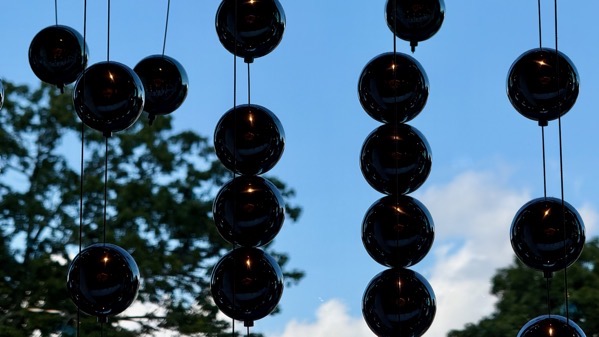
Apologies for delayed post. I just got too yawn-y too early to have sufficient thought to post before crashing.
I’m fine (she indicates while sipping her morning coffee).
Friday, 18 July 2025

Apologies for delayed post. I just got too yawn-y too early to have sufficient thought to post before crashing.
I’m fine (she indicates while sipping her morning coffee).
Thursday, 17 July 2025
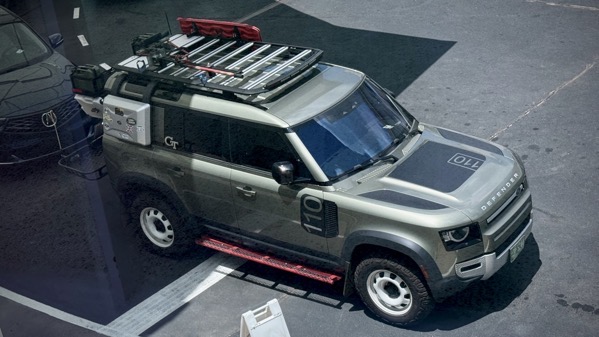
Yeah, this is an odd angle to look at a vehicle. Yet, what’s the vehicle tricked out to maximize? Are those rectangular forms antennae or liquid holders? That implement on the roof—it’s not a weed eater, so what is it?
Quick goo-search: Land Rover Defenders start at 73K or 153K, depending on I’m not sure what. But that doesn’t explain the extras….
Wednesday, 16 July 2025
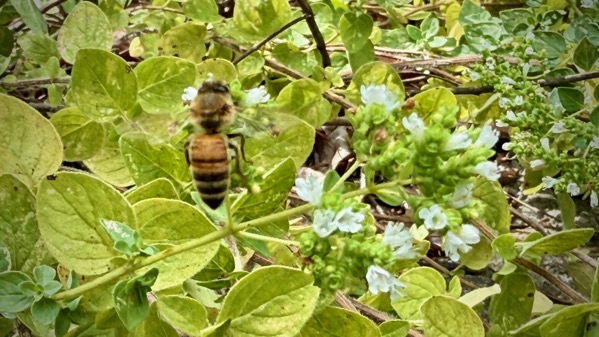
Universal reason #8 for out-of-focus photo: very hot-and-muggy, so I didn’t hang around to take a proper photograph, and not merely a snap.

Okay, admit it: you smiled (or at least thought about it inside).
Saturday, 12 July 2025
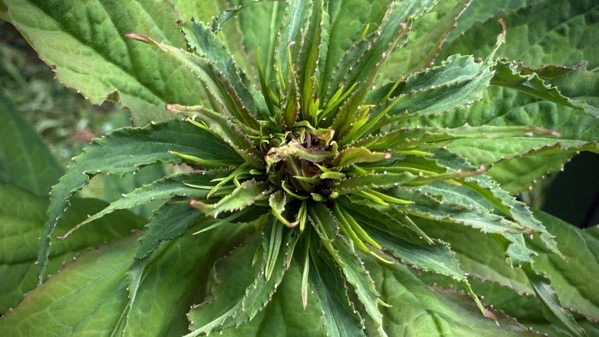
It’s a wild weekend here in the ATL, with Beyonce doing cowboy hat concerts downtown, and the baseball folks congregating on the north-side ahead of the All-Star game on Tuesday. I’m glad we’re just outside of those orbits.
Friday, 11 July 2025
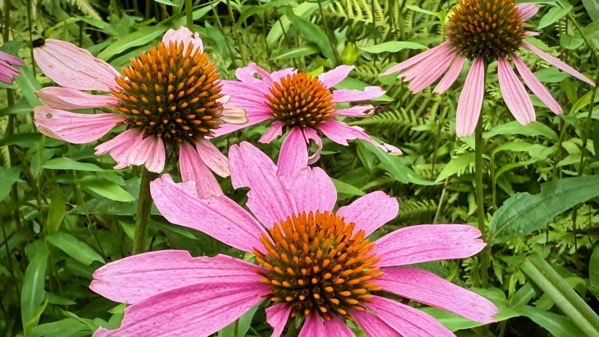
Seeking words to add to this photo, I discovered that coneflowers (Echinacea) are native to eastern and central North America. That surprised me…in a good way. I often figure (erroneously) that pretty garden flowers are from elsewhere, like Asia and Africa.
Bonus: dahlias are also New World—from the Basin of Mexico area, as I understand it.
Wednesday, 9 July 2025

Just before dark, thunder boomed and moisture descended. This photo was from the earliest moments of The Arrival.
I’m not in a desert by any means, yet this event made me think about Gary Nabhan’s slim volume The Desert Smells Like Rain (1982). The title is from an observation by a Tohono O’odham child, a native of the Sonoran Desert, as I recall. [Link to read more about the O’odham by the O’odham.]
Saturday, 28 June 2025
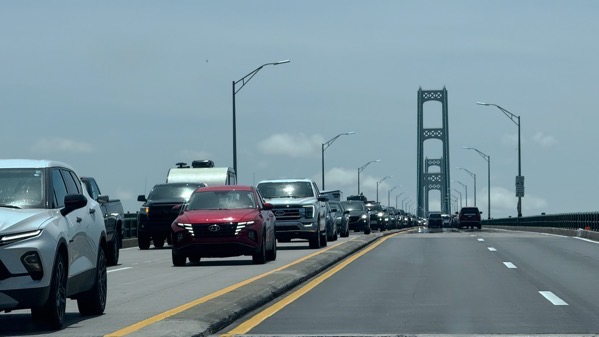
We had maybe eight cars in front of us at the toll booth. We could see the northbound traffic going on and on. The back up started at the very top of the brige, and by the density of traffic we saw south of there, it backed up further within just a short time. Soooo glad we were southbound.
But why so much traffique? Model change-over?
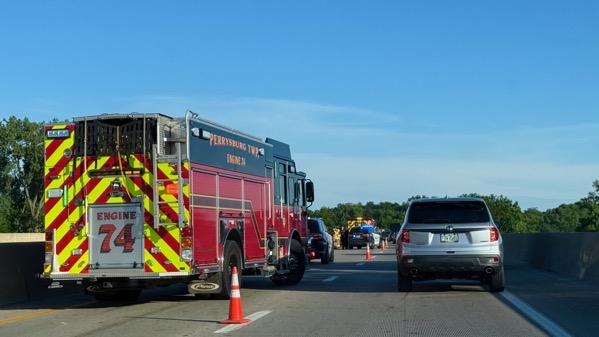
This Ohio slow-down must have just happened before we got to it. I saw one vehicle and one person (neither looking damaged, although the car was pointed north and had a soft rear tire, oops) standing outside it talking to cops and firefighters. I wasn’t rubber-necking, though, mind you. 😉

Note the general haziness in the bridge picture (high, thin smoke?), and the pretty darned clear sky in the second photo…further south in Ohio, after dark, we came upon wet pavement, and these drippy roses in a rest area (obv: evidence of rain).
That’s it. I’m going to avail myself of the easy upload using my phone hotspot…such efficiency! 😎
We’ve been seeing lots of fireworks as we continue south toward KY…several towns were having strawberry festivals, but not in Dayton or Cincinnati. Curious. 🤩
Thursday, 19 June 2025

We found the darkest purple lilacs I remember ever seeing, which we found on the Seul Choix lighthouse grounds.
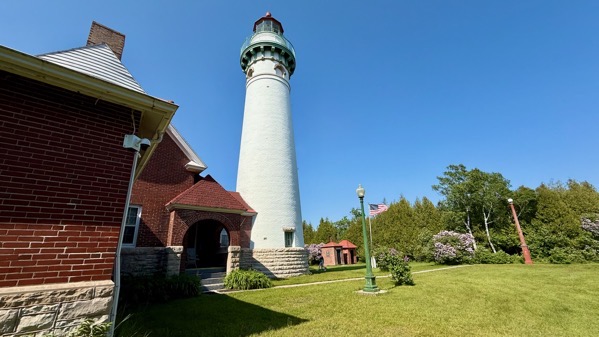
There’s the light, with the keeper’s home to the left. [Apologies for the exaggerated keystoning.]

It’s on a point that projects out in the M of HOMES.
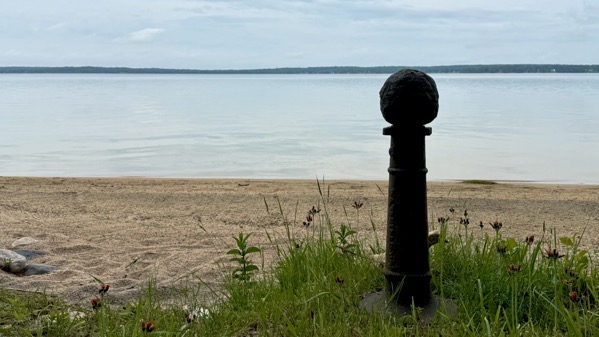
Contrast that with “our” lake. That’s a round rock (perhaps/probably rounded by humans, and thus an artifact) atop a binnacle. Because of this weighty binnacle that was on/near our beach, that word was part of the vocabulary of the kids who grew up in my generation on this property, and probably would not otherwise have been familiar with the term. Now, why there was a binnacle of this scale here, I do not know, because it’s way too large for a ship/boat on this lake, but not for one a HOMES lake.